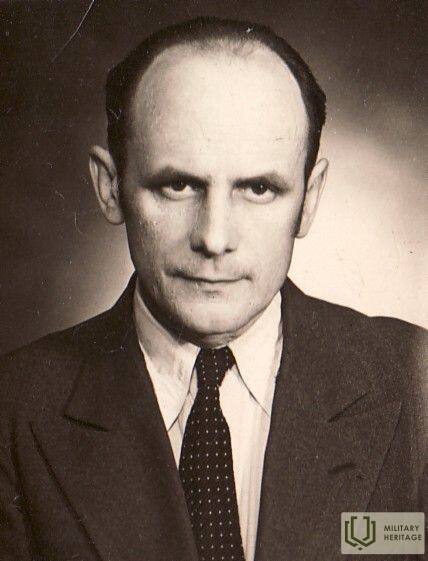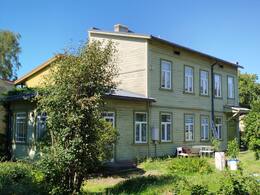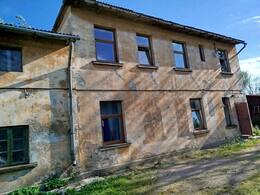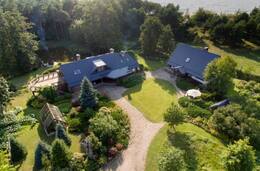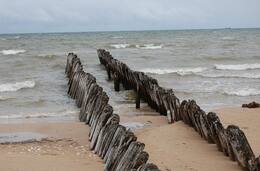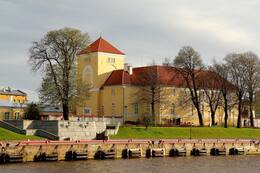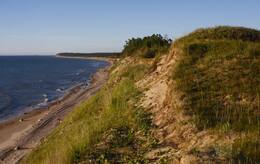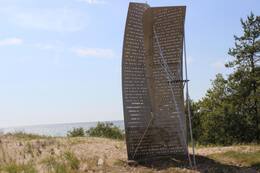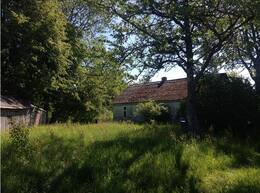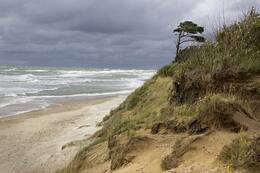The secret and dangerous activity of Valdemar Günter
The name of Valdemārs Ęinter was the last hope of many Latvian refugees to escape to Sweden. Too much attention from the fugitives was dangerous, and therefore Günther maintained secrecy
The hidden and concealable fact that the "Swedish cause" was headed by V. Ginter, nicknamed Doctor, had become known to the general public. It should be noted that at that time it was difficult to find a refugee, because refugees did not register with the police, as was customary in Latvia. It was also possible to impersonate someone else. In general, introductions at this stage either took place in the usual way, saying one's name, or the name was grunted inaudibly and vaguely. It was not easy for V. Günter to get rid of the besiegers. They had found him in his apartment on Karlīnes Street 4 and when they were not allowed in, they walked along Karlīnes Street and waited for him to come out. Günter had to run away through the yard with another exit to the street..
Across the sea in 1944/45. The memories of 130 witnesses were arranged by V. Lasmane. Stockholm: Memento, 1990, 80-81. p.
Related timeline
Related topics
Related objects
The building in Ventspils, where in 1944-1945 In 2010, LCP representative and refugee boat traffic organizer Dr. lived in Kurzeme. Valdemars Ginters
House at 4 Katrīnes Street, Ventspils, where archaeologist Valdemārs Ęinters worked.
From October 1944 to May 8, 1945, the representative of the LCP in Kurzeme was archaeologist Valdemārs Ęinters (nicknames "Doctor", "Gardener") (1899–1979). Participant of the Latvian War of Independence, director of the State Historical Museum and docent of the University of Latvia. Awarded the Order of the Lāčplēš War and the Order of the Three Stars. One of the signatories of the LCP memorandum of March 17, 1944. Lived in Sweden after World War II. From 1949 to 1979, chairman of the board of the Latvian National Fund.
The building in Ventspils, where LCP liaison Valentine Jaunzeme (Lasmane) lived in 1944
House at Lauku Street 4, Ventspils, where the teacher teacher Valentīne Lasmane (b. Jaunzeme) (1916–2018) lived and worked, who in 1944-1945 worked as LCP liaison and member of Ventspils communication group. Lived in Sweden after World War II. She compiled the testimonies of 130 boat refugees in the publication "Across the Sea 1944/1945." (Stockholm, 1990), but V. Lasmane's own life story can be read in the book "The night is not just for sleeping" (Riga, 2020). In 2000, she was awarded the Order of Three Stars. Died at the age of 102 in 2018 in the Stockholm suburb of Tebia.
"Bambaļi" houses - one of the main places of accommodation for boat refugees
The restored "Bambaļi" houses in Ošvalki, Jūrkalne parish, were one of the main places of settlement for boat refugees on the coast of Kurzeme.
The coast of Mazirbe, from where the refugee boat traffic to Sweden took place in 1944
The coast of Mazirbe was an important place in the Second World War, from where the traffic of refugee boats to Sweden took place in 1944.
Prison in the castle of the Livonian Order during World War II
1944-1945 in the prison set up in Livonia Oden Castle. In 2010, several members of the LCP Ventspils communication group and the movers of refugee boats were detained.
The road to "Grīnieku" houses in Vārve parish
The road to the "Grīnieku" house in Vārve parish, where in 1944 there was one of the main settlements of boat refugees on the coast of Kurzeme.
Refugee temporary accommodation "Vārve huts"
Vārves "huts", a place in Ventspils county, which served as a temporary accommodation for Latvian refugees who were waiting for boats from Gotland to arrive in 1944.
Memorial sign for refugees "Sail of Hope" in Jūrkalne
The "Sail of Hope" commemorative sign for the World War II refugees who crossed the Baltic Sea by boat to the island of Gotland in Sweden in 1944 and 1945. The memorial is located in Osvalki on the dunes between the sea and Ventspils-Liepaja highway, near the public transport stop "Kaijas". It was created by sculptor Ģirts Burvis, who realised it as a sail of hope symbolising the memory of Latvian refugees.
Between autumn 1944 and spring 1945, fearing the renewed Soviet occupation but unwilling to evacuate to a devastated and threatened Germany, some Latvian citizens tried to reach the nearest neutral country, Sweden, by sea. Some of the boats were organised by the Latvian Central Council with the help of the Western Allied countries, which resulted in one of the largest refugee concentration points in Jūrkalnes parish. Besides the boats organised by the Latvian Central Council, other boats were also taken across the sea. It is estimated that about 5000 persons managed to cross the sea. The number of deaths is unknown, as no records were kept of refugees leaving the Kurzeme coast.
The voyages were dangerous because the refugees were threatened by German patrols on the coast and at sea, sea mines, Soviet aircraft and warships, as well as storms, as the crossings often took place in unsuitable and overloaded cutters and boats without sufficient fuel and food supplies, sea charts and navigational instruments. Departures from Latvia were carried out in secret. The destination of the boats was the island of Gotland, and the journeys most often started on the west coast of Courland (from Jūrkalne to Gotland is 90 nautical miles or about 170 kilometres as the crow flies).
"Laukgaļi" house, writer Kārlis Skalbe's place of residence
"Laukgaļi" in Jūrkalne parish, the writer Kārlis Skalbe's place of residence in October-November 1944, while waiting for the refugee boat to Sweden.
Staldzene steep bank, from which refugee boats to Sweden were transported in 1944
In 1944, there was an active traffic of refugee boats to the shores of Sweden from Staldzene.




